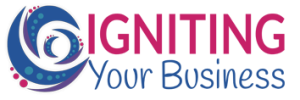Want More Clients from Your Website? Start Here.
All businesses want more leads they can turn into paying clients – and ultimately into bottom-line profit, right?
Your website should help make that happen. It can turn a casual visitor into a qualified lead without needing a full redesign. In fact, with a few smart updates and intentional content, your existing site can become a lead-generating machine.
Let’s break it down into simple, practical steps – starting with the easiest ones and working our way toward the ones that take a little more time and effort.
What Is Lead Generation, Really?
Lead generation is simply the process of getting potential clients interested enough in what you offer to:
- Share their email address in exchange for valuable information (so you can nurture the relationship),
- Buy directly from your site, or
- Reach out to start a conversation.
But even smart, experienced humans need direction. So do your website visitors. That’s where Calls to Action (CTAs) come in.
What’s a CTA, and Why Does It Matter?
A CTA (Call to Action) tells your visitor what to do next – whether it’s scheduling a call, downloading a resource, or buying a product. Without one, even the best website content can fall flat.
Some classic CTA examples:
- Click Here
- Book a Call
- Subscribe
- Buy Now
Let’s walk through how to use them effectively – starting with the most common one.
Have a Clear Call to Action (CTA)
The most basic CTA? The “Contact Us” form. And nearly every website has one.
To turn it into a lead-generating tool:
- Add a clear, visible button on every page that links directly to your contact or booking form.
- Use simple, direct language: “Book a Call” or “Let’s Talk” works better than vague or overly clever copy.
Now let’s talk about the forms themselves – because this is where my perspective has changed over time.
Why I Now Include Pricing on My Calendar Forms
For years, I told clients to keep their contact forms short and sweet – just enough info to start a conversation. I also didn't ask about budget because I didn’t want to scare people off before we had a chance to talk about value. (That thinking sound familiar?)
But as my business evolved, so did my thinking.
Now, I include pricing ranges on my calendar booking form – and I’m intentional about using these forms as qualifiers, not just data collectors.
Here’s why this shift matters:
- It filters in the right people. I work with business owners who are not just curious—but ready, willing, and able to invest.
- It filters out tire kickers. My time (and yours) is valuable. This approach prevents spending time on calls that were never going to go anywhere.
- It sets clear expectations. Transparency builds trust. When pricing is clear upfront, the conversation focuses on value, not sticker shock.
- It reflects business maturity. As your services grow in impact, so does the importance of qualifying prospects who are the right fit – not just anyone who fills out a form.
This change isn’t about being rigid or unapproachable – it’s about honoring your time, your expertise, and your ideal client’s readiness.
Note: I still keep my general contact form simple for inquiries, referrals, and questions – but if you’re booking time on my calendar, we’re both showing up seriously. That deserves clarity on both sides.
Pro Tip: Test Your Forms Regularly
Make sure your contact forms (and calendar booking forms) actually work. Test them yourself, and confirm that submissions land where they should. Nothing kills momentum like a broken form or a lost lead.
A Great CTA Has Three Key Ingredients
To turn a casual browser into a buyer, your CTA should include:
- Low friction. Don’t make them give up a pint of blood and their third-grade report card just to get in touch.
- Urgency. Add a time-sensitive reason to act: “Book now – only 3 spots left” or “Offer ends Friday.”
- Clear direction. Tell them exactly what to do next: “Download the checklist,” “Schedule a free consultation,” or “Get the guide.”
Content Drives Lead Generation
All roads lead to content. The better your content, the more it moves your visitors toward taking action.
That includes:
- Blog posts (like this one!)
- Your About page
- Service descriptions
- FAQ pages
- Even the way your menu is structured
Each page should naturally guide your visitor to the next logical step in their journey with you.
What’s a Customer Journey?
Think of your website as a store – and your visitor as a shopper. Where do they enter? What do they notice first? What’s their path from curiosity to checkout?
Your job is to make that journey clear and intentional.
- Use prominent CTAs that match the page’s goal
- Keep your navigation simple and intuitive
- Provide multiple paths through your content (buttons, in-text links, images, etc.)
Give Your Prospect Something Valuable (Lead Magnets)
Lead magnets – those irresistible “freebies” – are one of the easiest and most effective ways to capture a lead.
Examples include:
- “5 Mistakes Most Coaches Make with Their Websites”
- “10% Off Your First Session”
- “Free Strategy Call”
- “Checklist: Is Your Website Working for You?”
The goal is simple: give them value upfront in exchange for an email address. Once they opt in, you can nurture them through email marketing and guide them toward working with you.
Fun fact: Email marketing still has one of the best ROIs out there – about $41 for every $1 spent.
Final Thought: Don’t Just Add Leads—Attract the Right Ones
You don’t need more leads – you need the right ones.
That means getting crystal clear on your messaging, your process, and yes – even your pricing. When your website works as a lead-generation system, you’re no longer chasing clients. You’re inviting the right ones to raise their hand.
Want help making sure your website is working for you?
Book your Profitable Path Alignment session today
(See what I did there? That’s a call to action )






